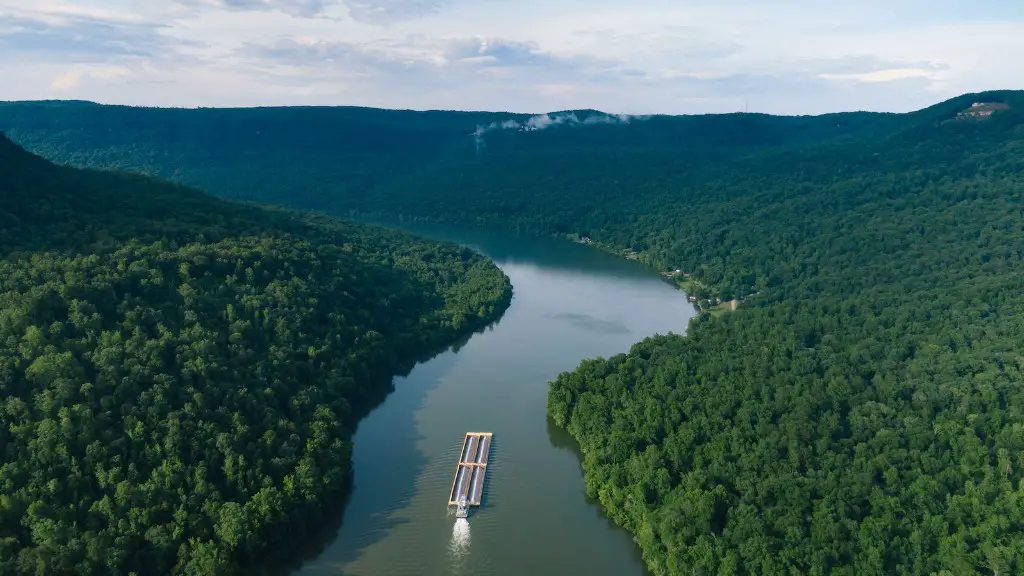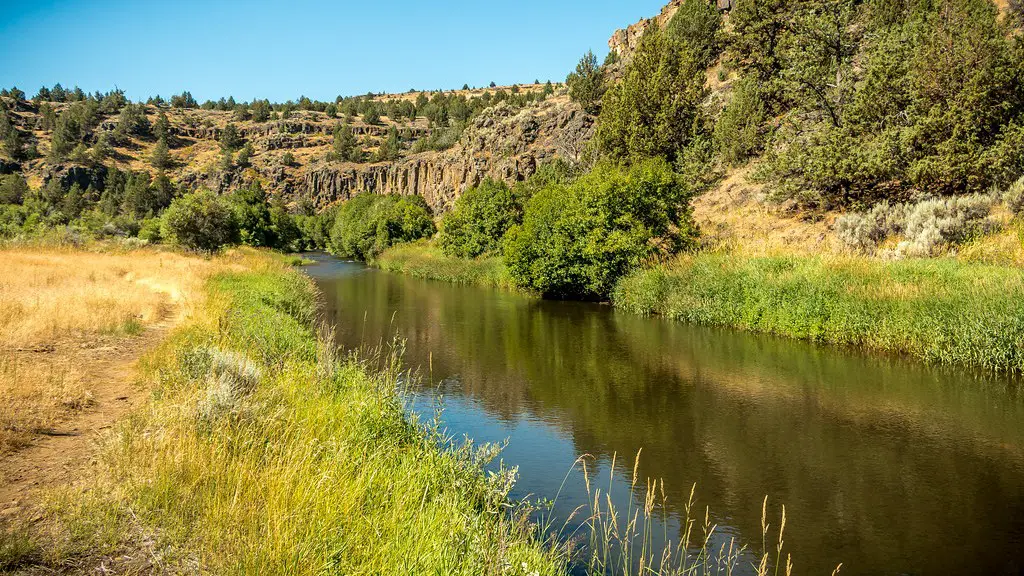The Ganges is one of the world’s most revered rivers, but it is also one of the most polluted. Every day, millions of people use the river for bathing, cooking, and drinking. This pollution is largely due to the discharge of untreated sewage and industrial effluents into the river. The result is a river that is contaminated with heavy metals, pesticides, and other toxic pollutants.
The most common pollutants in the Ganges River are sewage and industrial effluents. Other pollutants include agricultural runoff, heavy metals, and hazardous chemicals.
What is the biggest pollutant in the Ganges river?
The main causes of water pollution in the Ganges river, like many other rivers, are the disposal of human sewage and animal waste, increasing population density, and disposal of industrial waste into the river. In order to reduce water pollution in the Ganges river, it is important to treat human sewage and animal waste before it is disposed of into the river, to increase the capacity of sewage treatment plants, and to raise awareness about the importance of not polluting the river.
The Ganga River is one of the most revered waterways in the world, and also one of the most polluted. It provides water for nearly half-a-billion people, more than any other river in the world, stretching from the foothills of the Himalayas to the Bay of Bengal. The river is considered holy by Hindus and is worshipped as the goddess Ganga. Despite this, the river is extremely polluted, with sewage and industrial waste being dumped into it on a regular basis. This has led to a decline in the quality of the water, and a decrease in the number of fish and other aquatic life. The government has been working to clean up the river, but progress has been slow.
What are the main causes of water pollution in the Ganga river
The main causes of water pollution in the Ganga river are the increase in the population density, various human activities (such as bathing, washing clothes and utensils, disposal of animal and human excreta) and dumping of various harmful industrial waste into the river. All of these activities lead to the contamination of the water, which is then used for various purposes such as drinking, cooking and irrigation. This has serious implications for the health of the people living in the vicinity of the river as well as for the environment.
The Ganga is India’s most important and iconic river. It flows down from its glacial source in the high Himalayas to course through five states in the northern plains before draining into the swirling waters of the Bay of Bengal through the Sunderbans delta, the largest mangrove system in the world. The Ganga is the lifeline of millions of Indians who live along its banks and depend on it for their livelihoods. It is also a sacred river for Hindus and is worshipped as a goddess. The Ganga is under immense pressure from the growing demands of a rapidly expanding population and economy. The river is polluted from the discharge of sewage and industrial effluents, and its flow is further reduced by the withdrawal of water for irrigation and other uses. The government of India has launched the Namami Gange programme to clean up the river and protect it from further degradation.
What are 3 problems with the Ganges river?
The Ganges is a vital river in India, revered by Hindus who believe it to be holy. But it is under threat from a number of environmental problems. Too much water is being removed for farming and other uses, barrages and dams disrupt the Ganges’ natural flow, and pollution from homes and industries have badly contaminated what’s left of this once mighty, free-flowing river. The government is taking some steps to try to protect the Ganges, but more needs to be done to save this important waterway.
The Ganges river is one of the most polluted waterways in the world due to the amount of sewage that is emptied into it every day. Only about half of the three million litres of sewage that is dumped into the river each day undergoes any kind of treatment, leaving the river’s waters extremely dirty. This pollution is having a devastating effect on the environment and the creatures that rely on the river for their survival.
Which virus is found in Ganga water?
This is great news! The fact that this virus is more effective in treating severe human infections than some current antibiotics is very impressive. This could be a game changer in the medical field and I am very excited to see how this research develops.
The Ganges is a large and extremely powerful river, and as such, swimming in it can be very dangerous. The river has different types of flow and undertow in different places, and swimming in the calmer areas is generally not recommended due to the high pollution levels. In addition, the river is also home to many dangerous creatures, so it’s best to avoid swimming in it altogether.
What is the cleanest river in the world
The Thames River in London is one of the cleanest rivers in the world. The water quality is good and there is little pollution. The river is home to many different species of fish and other wildlife.
The Yamuna is one of the most important rivers in India, but it has become one of the most polluted rivers in the world due to the discharge of sewage and other pollutants from the metropolis of New Delhi. The river is still flowing, but it is now full of pollutants which can cause serious health problems for those who come in contact with the water.
Can you drink Ganges water?
Yes, Ganges water can be made drinkable with the right treatment and filtration methods. However, there is a risk associated with consuming water from the Ganges, as it can contain harmful bacteria and contaminants. It is advisable to consult with a doctor or water expert before consuming any water from the Ganges.
Bathing in the Ganga can expose people to high levels of faecal coliform bacteria, which can cause diarrhoea, vomiting and fever. The best way to protect yourself from these bacteria is to avoid contact with contaminated water, and to practice good hygiene, such as washing your hands after contact with water.
What happens if you swim in the Ganges
Hindus believe that water is a purifying agent that can cleanse away sin. For many Hindus, even dirty water is considered holy and they will take a dip in it as a way to cleanse themselves. Another practice in Hinduism is to sprinkle a little water on one’s head as a way to receive a blessing.
The river stinks because of the untreated sewage and effluents from the tanneries. The tanneries are supposed to be closed, but the river still smells bad.
How do people not get sick from the Ganges?
There is a belief among some people that locals have built up an immunity to the river’s bacteria, even if their mission is to clean it up. However, according to Sue Lennox, chief executive of OzGreen, the idea that people who bathe in the river don’t get ill is a myth.
Ganga is not polluted. It is one of the 20 rivers in world which comes under clean category. dissolved oxygen quantity defines cleanliness quality of river and When bacteria growth is higher, oxygen quantity gets less.
Are there sharks in Ganges
The river shark is a species of fish that is found in rivers all over the world. There are six different species of river shark, and one of them is the Ganges shark. This type of shark is found in the Ganges River in India. It is also found in the Brahmaputra, Mahanadi, and Hooghly rivers. The Ganges shark is a type of fish that is known to be very dangerous. It is important to be careful when swimming in these waters, as the Ganges shark may attack.
The river here is home to crocodiles and Gangetic dolphins , but numbers are not known. Though crocodiles are spotted in the river occasionally, it is arguably for the first time that one ventured into a human habitat , Tiwary said. Currents of the Ganga, which is in spate now, could have pushed the crocodile out.
Conclusion
The Ganges River is one of the world’s most polluted rivers. Industrial and domestic waste, including sewage and trash, are dumped into the river daily. As a result, the river is teeming with harmful pollutants, including Heavy metals, such as lead and mercury; Persistent organic pollutants, such as DDT and PCBs; and Biological pollutants, such as bacteria and viruses.
The Ganges River is one of the most polluted rivers in the world. The main pollutants are human waste, industrial waste, and agricultural waste. The pollution is so bad that it is estimated that 10-20% of the pollution in the river is from human waste. This pollution is having a devastating effect on the river’s ecosystem and is causing the river to slowly become devoid of life.





